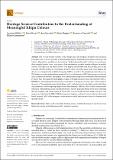Files in this item
Heritage science contribution to the understanding of meaningful khipu colours
Item metadata
| dc.contributor.author | Milillo, Lucrezia | |
| dc.contributor.author | Hacke, Marei | |
| dc.contributor.author | Norrehed, Sara | |
| dc.contributor.author | Degano, Ilaria | |
| dc.contributor.author | Gherardi, Francesca | |
| dc.contributor.author | Gunnarsson, Ellinor | |
| dc.date.accessioned | 2023-02-21T16:30:01Z | |
| dc.date.available | 2023-02-21T16:30:01Z | |
| dc.date.issued | 2023-03-01 | |
| dc.identifier | 283099159 | |
| dc.identifier | 709f598f-2233-439c-ac75-a20eeb6ab2a3 | |
| dc.identifier | 85151324840 | |
| dc.identifier.citation | Milillo , L , Hacke , M , Norrehed , S , Degano , I , Gherardi , F & Gunnarsson , E 2023 , ' Heritage science contribution to the understanding of meaningful khipu colours ' , Heritage , vol. 6 , no. 3 , pp. 2355-2378 . https://doi.org/10.3390/heritage6030124 | en |
| dc.identifier.issn | 2571-9408 | |
| dc.identifier.other | ORCID: /0000-0003-3737-4615/work/135851309 | |
| dc.identifier.uri | https://hdl.handle.net/10023/27022 | |
| dc.description | Funding: Financial support by the Access to Research Infrastructures activity in the Horizon 2020 Programme of the EU (IPERION HS Grant Agreement n.871034) is gratefully acknowledged. This work was also supported by The Wolfson Foundation, whose Postgraduate Scholarship in the Humanities is acknowledged with appreciation. | en |
| dc.description.abstract | This work is the first scientific study of khipu dyes and inorganic mordants and auxiliaries, paving the way for a new approach to understanding khipus’ meaningful materiality, technology, and colours. Khipus have usually been described as “Andean knotted records”, but they are much more than complex knotted cords: a great part of the information encoded resides in khipus’ incredible colours. The objects of this study are two Wari khipus, 1932.08.0001 and 1932.08.0002, now at the Museum of World Culture in Gothenburg, Sweden. After a morphological study of the khipus, the objects were imaged with multiband imaging (MBI) as an aid for the sampling decisional process. The khipus were then analysed non-invasively by X-ray fluorescence (XRF) spectroscopy on selected areas of particular interest. The khipus were consequently sampled for elemental characterisation by micro-XRF, and liquid chromatography coupled with high-resolution mass spectrometry (HPLC–HRMS) for characterising the organic dye composition. This paper presents a part of the results of the project “Meaningful materials in the khipu code”, with the intent to shed light on the difficulties and possibilities of investigating khipu colours and dyestuffs. MBI and XRF revealed unforeseeable structural characteristics, such as remnants from a heavily degraded thread in an area of missing thread wrapping and a dual-coloured thread that was previously deemed single-coloured. The organic dyes identified by HPLC–HRMS comprised indigoids, cochineal, and an unknown flavonoid-based dyestuff. XRF of the inorganic components revealed associations of several elements with specific colours. | |
| dc.format.extent | 24 | |
| dc.format.extent | 20853983 | |
| dc.language.iso | eng | |
| dc.relation.ispartof | Heritage | en |
| dc.rights | Copyright: © 2023 by the authors. Licensee MDPI, Basel, Switzerland. This article is an open access article distributed under the terms and conditions of the Creative Commons Attribution (CC BY) license (https:// creativecommons.org/licenses/by/4.0/). | en |
| dc.subject | Khipu | en |
| dc.subject | Wari | en |
| dc.subject | Textiles | en |
| dc.subject | Dyestuffs | en |
| dc.subject | Heritage science | en |
| dc.subject | Multiband imaging | en |
| dc.subject | X-ray fluorescence | en |
| dc.subject | High-performance liquid chromatpgraphy | en |
| dc.subject | Mass spectrometry | en |
| dc.subject | F1201 Latin America (General) | en |
| dc.subject | GN Anthropology | en |
| dc.subject | CB History of civilization | en |
| dc.subject | DAS | en |
| dc.subject | NIS | en |
| dc.subject | MCC | en |
| dc.subject.lcc | F1201 | en |
| dc.subject.lcc | GN | en |
| dc.subject.lcc | CB | en |
| dc.title | Heritage science contribution to the understanding of meaningful khipu colours | en |
| dc.type | Journal article | en |
| dc.contributor.institution | University of St Andrews.Social Anthropology | en |
| dc.identifier.doi | 10.3390/heritage6030124 | |
| dc.description.status | Peer reviewed | en |
This item appears in the following Collection(s)
Items in the St Andrews Research Repository are protected by copyright, with all rights reserved, unless otherwise indicated.

